Reply To:
Name - Reply Comment
Last Updated : 2024-04-19 05:18:00

With just six days of rainfall the Muththuiyankaddu tank reached spill level
 Adorned with pleasant greenery on either side, the Puthukkudiyirippu – Oddusuddan road is permeated with an uncharacteristic dampness in the air. Even though the soil has absorbed much of the water, traces of waterlogged fields remain among the lush paddy fields.
Adorned with pleasant greenery on either side, the Puthukkudiyirippu – Oddusuddan road is permeated with an uncharacteristic dampness in the air. Even though the soil has absorbed much of the water, traces of waterlogged fields remain among the lush paddy fields.
An evacuation centre in Kerudamadu houses 47 families temporarily, following the flash floods which struck the North-East of the island last month. Kerudamadu, is located in Oddusuddan, a small town, nearly halfway between Maankulam and Mullaitivu. Since heavy showers were reported in many parts of the area, at least 123, 862 people have been affected by floods and heavy winds in the Northern Province alone, while 7,286 of them are from the Oddusuddan division.
The villagers of Kerudamadu greet —albeit reluctantly— a team of doctors and interns from the Medical Faculty of the University of Sri Jayewardenepura. Equipped with medical supplies, these professionals are here to conduct a health camp for the residents of the area, with the generous help of the officers of the Sri Lanka Air Force Station Mullaitivu.
At least 15 children are seen inside the dim lit evacuation centre, some playing while others lie on their backs. Still others who are old enough to understand, with looks of despair and confusion on their faces. Infants cling on to their mothers, who complain of fever, cough and various ailments they had observed in their children since the onslaught of incessant rains. The stench of mud and murky waters surround the evacuation centre, which shelters almost 100 people including very young children. Stray pups with what appears to be skin disease scramble playfully in the very place where the children lie, creating an ideal breeding ground for disease.
The stench of mud and murky waters surround the evacuation centre, which shelters almost 100 people including very young children. Stray pups with what appears to be skin disease scramble playfully in the very place where the children lie
As the doctors set up their makeshift work desks, a woman approaches with her teenage daughter in tow, complaining of fever. The girl clearly troubled and uncomfortable with the physician’s questions, unwillingly describes her symptoms at the behest of the mother. She goes on to show the doctor her arms and feet, which are spotted with light-coloured bumps and abrasions on the skin, a result of disease spreading flood water, the doctor explains.
On a nearby table, another doctor attempts to examine a screaming, protesting baby suffering from a dreadful cough. The young mother, helped by several women tries to pacify the infant with no luck. Next to them a teenage boy moans in pain while getting aggravated lacerations cleaned. At least a dozen villagers look on. Old men and women complain of breathlessness and fatigue while waiting for their turn to be examined.
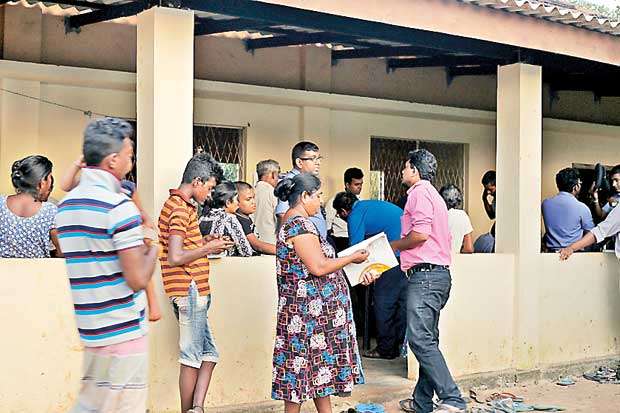
The evacuation centre in Kerudamadu houses nearly 100 victims of the recent floods
The scenes at the Kerudamadu camp, the smallest of three temporary shelters set up in the area only detail the helplessness of this community in addressing a disaster they were least prepared for. Flash floods, let alone floods are rarely heard of in this part of the country. However, December 2018 brought forth an unexpected volume of rain after a prolonged dry spell of three years in Mullaitivu.
As dusk sets in, we set off on unsurfaced terrain towards the second camp at the Munnakandal GTM School in Puthukkudiyirippu. Here, another 40 families with over 200 members are stranded unable to return to their homes. While dozens of children play outside in the dark, young men sit under an expansive tree. Some of them, we are told, will return home after checking with their families, to safeguard the houses they’ve left behind.
When Kanageswari moved to Mullaitivu in 2004, never did she imagine that it would be an intimidating body of water that would endanger her life one day. Insuring herself and her children against this kind of natural disaster was far from her mind, when she left her family home in Kundasale. Almost a decade later, after what she believes was a peaceful period, Kanageswari describes a new kind of fear she was forced to endure.
“On Saturday (December 22) we experienced heavy rains during the night. Suddenly our neighbours received the message to evacuate. Almost immediately after the message was received, water flooded into our homes. Everything was so confusing. We wanted to save the little possessions we had from being washed away. But we had no choice. Either we could save our things or carry our children to safety, we certainly couldn’t do both. Now we only have the clothes on our back,” Kanageswari laments.
She is one among many who are truly appreciative of the authorities for their efforts. “It was shortly after midnight but government officers were swift to respond to our needs. We received clothes, rations and all meals from the district officials for the first three days. If not for the rescue efforts by the forces, we would have even lost our lives,” she remarks. “What we need right now is for our wells to be cleaned so that we can return to our homes. Without safe drinking water, it is impossible to return” Kanageswari stresses.
A school teacher from the area, Theeban also notes that the youth and civilians of the area were quick to support rescue efforts as well as the distribution of relief and aid. Nevertheless not all camps have received equal attention, according to Theeban. “Camps in cut off areas such as Oddusuddan don’t receive any aid apart from the rations provided by the government and the Disaster Management Centre,” he said.
Muththuiyankaddu Kulam, some seven kilometers away from this camp is a sizeable tank of which the sluice gates had been opened following the heavy showers of December 22. The average rainfall in Mullaitivu is 1,476 mm. However in just one night, the district experienced continuous rainfall over four to five hours. The precipitation was measured at 301 mm, covering almost a quarter of the average rainfall received in a year.
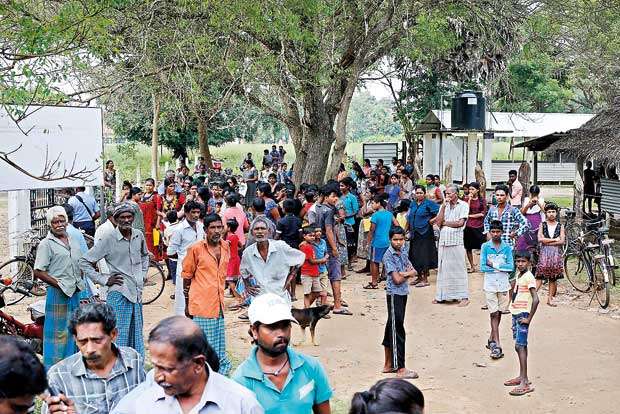
No aid or relief material had been received by the Muthuvinayagapuram camp
According to sources at the Irrigation Department, the nearby tanks which were evidently incapable of holding such volumes of water reached spill level in a matter of hours, forcing the officials to warn the public in the nearby low-lying areas. Mullaitivu, let alone the Northern Province did not anticipate this kind of rainfall as they had experienced a prolonged dry spell for the past three years.
“We didn’t open the sluice gates immediately as we wanted to allow time for the residents of the area to reach higher ground,” sources revealed. Instead of a gradual release of water into the floodplains, we gather that the district authority released the bulk of water at 12 noon the following day, which resulted in the immediate flooding of low- lying areas.
In nearby Muthuvinayagapuram, closer to the intimidating Muththuiyankaddu tank, one transitional centre houses 180 families, making it one of the largest temporary camps set up in the area. “We had never experienced rains like these in the 40 years that we lived here” claims Markandu Yogarasa, the leader of the local farming association. The Irrigation Department and officers of the tri-forces warned us that there would be a risk of flooding. It’s because of this timely warning that we were able to save our lives and seek shelter on higher ground,” Yogarasa opines.

The catchment area of the Muththuiyankaddu tank
However he adds that no aid or relief material was received by the Muthuvinayagapuram camp other than those allocated by the government. “After sustaining much difficulty for decades, we were able to restore our lives to normalcy, until this disaster took place,” he says. “Our lands and produce have been destroyed, but we are thankful that we’re alive,” Yogarasa adds.
Out of 6,210 acres of land in this area, almost 3,000 acres were inundated and crops have been destroyed, according to Yogarasa. He believes that the Thattaiyanmalai tank, a smaller tank of about 14 feet in depth, must be deepened by the irrigation authorities. “The containment area needs to be strengthened in order to avoid a repetition. The bund of the Thattaiyanmalai tank must be reinforced,” he states.
Sridaran Yogamalar echoing his sentiments says that state authorities have quickly responded to their needs immediately after the disaster. “The following morning, water levels of the Muththuiyankaddu tank was somewhere around 25 feet. They issued the warning in time, which we are thankful for. But our livelihoods have been destroyed and we need state support to restore our lives,” Yogamalar says, pleading authorities including the President and the Prime Minister to look into their needs. Farming, fisheries and animal husbandry are the chief sources of income and a majority of the occupants of this camp are now left with no means of income for the foreseeable future.
Instead of a gradual release of water into the floodplains, we gather that the district authority released the bulk of water at 12 noon the following day, which resulted in immediate flooding of low- lying areas
Meanwhile 68 year old Vadivel Alaikkalam recalls that the last time they experienced such heavy rains was back in 1984. “It was soon after I settled in Muthuvinayagapuram. After one month of heavy rains, the tanks started overflowing. Several people lost their lives. This time after just five to six days of rain, the tanks started to spill over. This is the first time since ’84, that we witnessed rains of this force,” he recollects.
“Even though there was no loss of lives, we fear for the loss of property. Some remained to protect their houses despite the warning to evacuate,” Alaikkalam says. He now suffers from scabs and bruises as a result of wading through floodwaters to reach his home, where he struggled to secure the little he possesses. “Floodwaters may recede, but if I remain at the camp, my house will be burgled in my absence. This was our experience even during the war. I can’t afford to lose anymore,” he says adding that the police should have provided their properties security. Alaikkalam is not alone, as many men of the camp had left the women and children at the shelter, only to return to their inundated homes by nightfall.
Villagers inform us that just a week prior to the floods, the Muththuiankaddu tank had been parched while the surrounding catchment area had been sapless. Now, the mighty Muththuiankaddu stands as a serene and tranquil body of water, concealed by surrounding shrubbery. It is clear that while the officials acted to the best of their ability, not a single person was able to predict or prepare for this disaster. While Northern politicians skilfully manoeuvre divisions to highlight animosity between the people of the North and the occupant tri-forces, the impression we were left with, was that in the remote parts of Oddusuddan, there was nothing but gratitude for authorities as well as first responders. The verdict is clear; the lack of disaster preparedness and unplanned development have significantly contributed to this devastation. In times of increasing natural disasters, isn’t it time that all of us — especially those in positions of power—focus on adapting to change and increasing resilience?

The containment area needs to be strengthened in order to avoid a repetition. The bund of the Thattaiyanmalai tank must be reinforced
- Yogarasa
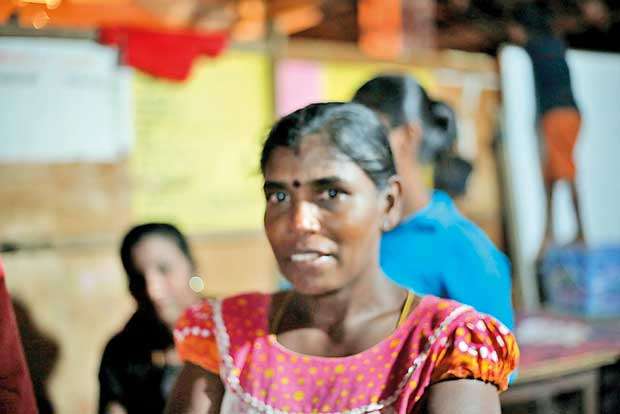
We had no choice. Either we could save our things or carry our children to safety, we certainly couldn’t do both. Now we only have the clothes on our back
- Kanageswari
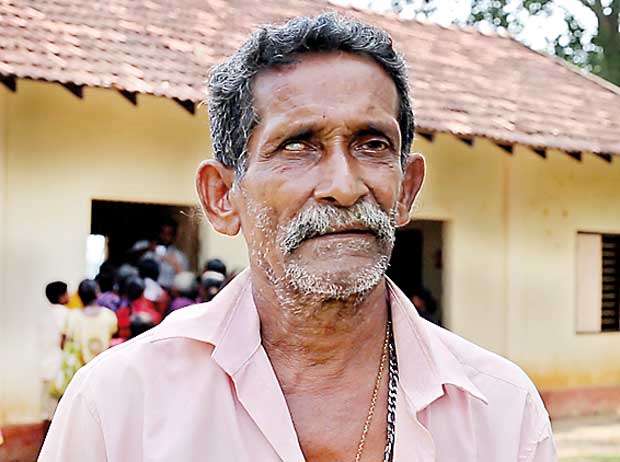
Even though there was no loss of lives, we fear for the loss of property. Some remained to protect their houses despite the warning to evacuate
- Alaikkalam
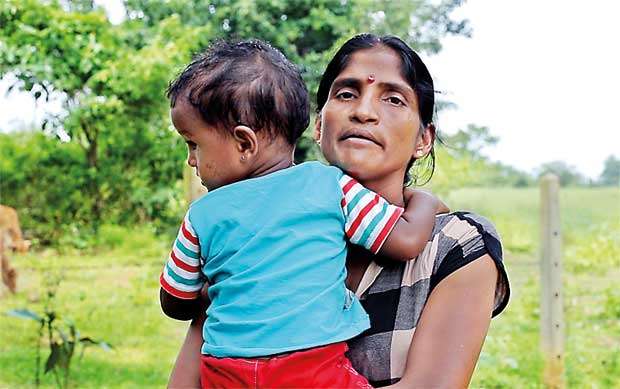
They issued the warning in time, which we are thankful for. But our livelihoods have been destroyed and we need state support to restore our lives
- Yogamalar
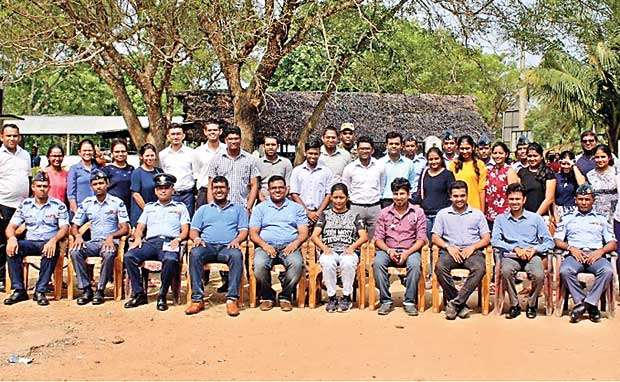
 At the request of the Daily Mirror and Tamil Mirror of Wijeya Newspapers Ltd. several health camps for flood victims were organised in Oddusuddan, Mullaitivu which had been cut off without access to rations or aid at the time. The camps were conducted by the academic staff members and interns of the Faculty of Medical Sciences, University of Sri Jayewardenepura, doctors from the Colombo South Teaching Hospital and Sri Lanka Air Force, under the guidance of the Vice Chancellor, University of Sri Jayewardenepura Prof. Sampath Amaratunge and Dean of the Faculty of Medical Sciences, University of Sri Jayewardenepura, Prof. Surangi Yasawardene.
At the request of the Daily Mirror and Tamil Mirror of Wijeya Newspapers Ltd. several health camps for flood victims were organised in Oddusuddan, Mullaitivu which had been cut off without access to rations or aid at the time. The camps were conducted by the academic staff members and interns of the Faculty of Medical Sciences, University of Sri Jayewardenepura, doctors from the Colombo South Teaching Hospital and Sri Lanka Air Force, under the guidance of the Vice Chancellor, University of Sri Jayewardenepura Prof. Sampath Amaratunge and Dean of the Faculty of Medical Sciences, University of Sri Jayewardenepura, Prof. Surangi Yasawardene.
“I was personally troubled to find out the situation of the camps in the North. I couldn’t imagine why the response was so slow to  help our people there. Within an hour, the medical faculty of our university helped put together a team of 27 members, who sacrificed their time, especially during the holiday season to reach Mullaitivu to conduct these camps,” Prof. Amaratunge said.
help our people there. Within an hour, the medical faculty of our university helped put together a team of 27 members, who sacrificed their time, especially during the holiday season to reach Mullaitivu to conduct these camps,” Prof. Amaratunge said.
Dr. Madura Jayewardene, Dr. Sajith Edirisinghe and Dr. Indika Liyanage from the Faculty of Medical Sciences, Dr. Chanaka Jayawardene and Dr. Buddhika Weerakoon from the Colombo South Teaching Hospital as well as Flying Officer (Dr.) Yadeesha Rathnasiri from the Sri Lanka Air Force led the team as Medical Officers. The contributions of the 17 pre-intern doctors from the 22nd batch of Faculty of Medical Sciences, University of Sri Jayewardenepura and Air Force officers including Squadron Leader W.K.S. Bandusena, Flight Lieutenant K.A. Rajaguru and Flying Officer K.A.J.K. De Silva were immense in helping the distressed victims of the floods in four locations across Oddusudan.
While essential drugs were supplied by the State Pharmaceutical Corporation, the Department of Family Medicine and the Colombo South Teaching Hospital, dry rations, water and stationery for school children were provided by the medical team. Wijeya Newspapers Ltd. distributed mosquito nets at each camp while the Sri Lanka Air Force provided transportation and logistics.

Add comment
Comments will be edited (grammar, spelling and slang) and authorized at the discretion of Daily Mirror online. The website also has the right not to publish selected comments.
Reply To:
Name - Reply Comment
On March 26, a couple arriving from Thailand was arrested with 88 live animal
According to villagers from Naula-Moragolla out of 105 families 80 can afford
Is the situation in Sri Lanka so grim that locals harbour hope that they coul
A recent post on social media revealed that three purple-faced langurs near t

49 minute ago
16 Apr 2024
10 Apr 2024